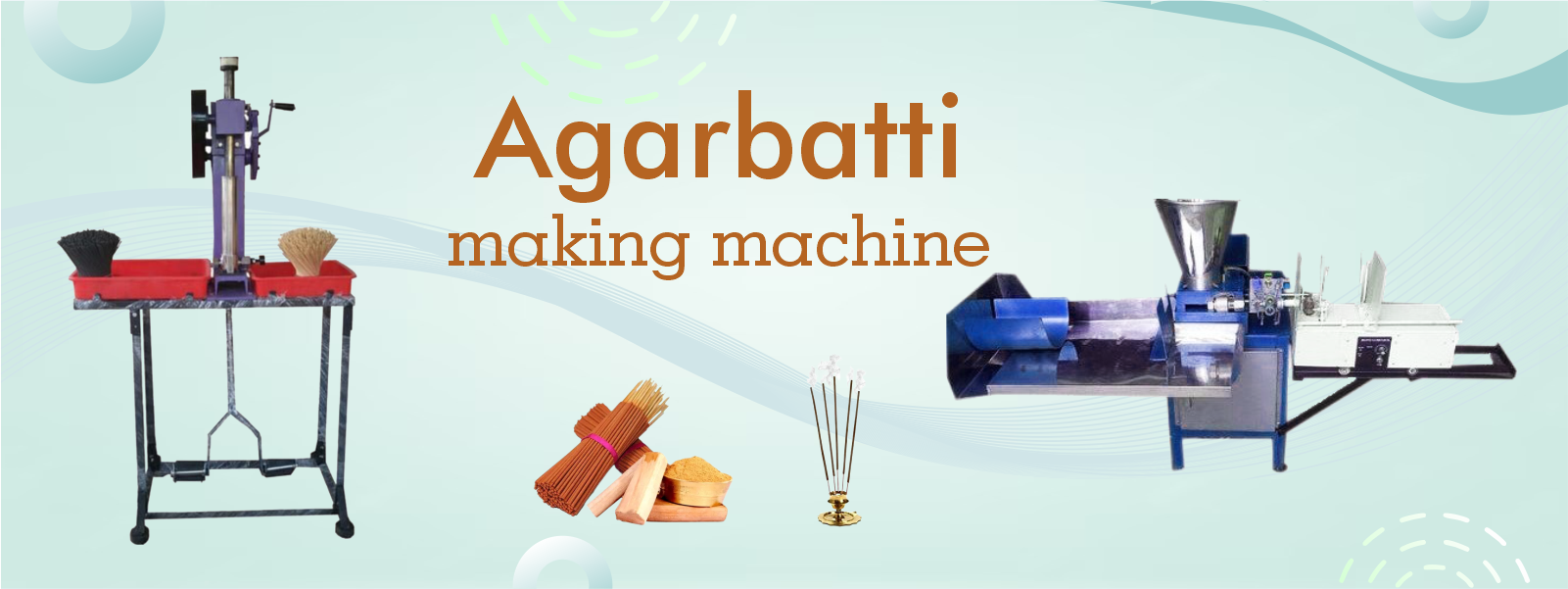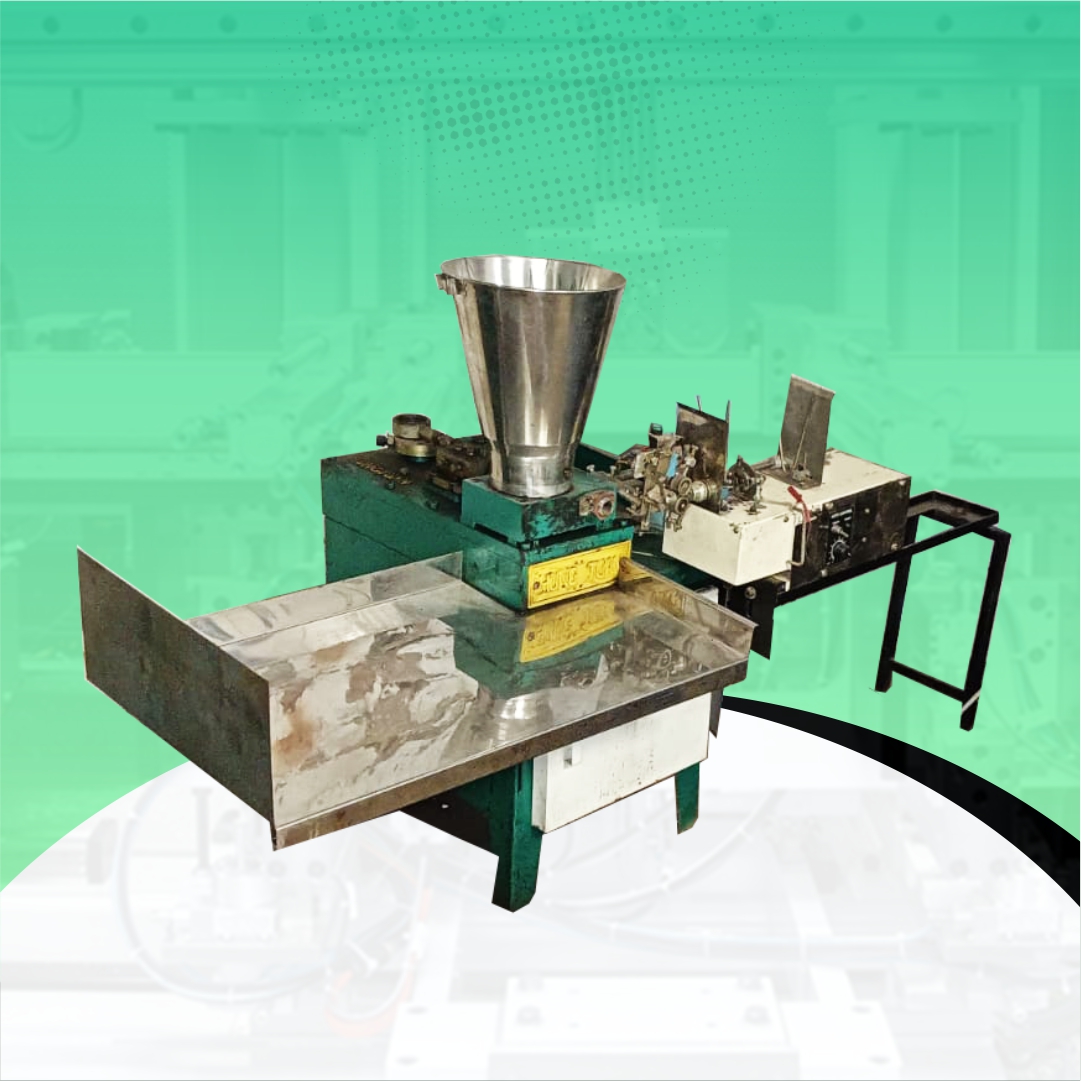
Paper Plate Machines
- Double Die Paper Plate Machine
- Fully Automatic Paper Plate Machine
- Hydraulic Paper Plate Machine
- Paper Plate Making Machines
- Single Die Paper Plate Making Machine
Notebook Making Machine
- Notebook Cutting Machine
- Notebook Edge Squaring Machine
- Notebook Making Machine
- Notebook Spiral Binding Machine
- Notebook Stitching And Folding Machine
- Notebook Stitching Machine
Incense Making Machines
- Automatic agarbatti making machine
- Camphor Tablet Making Machine
- Dhoopbatti Making Machine
- Manual agarbatti making machine
Food Processing Machine
- BREAD SLICER MACHINE
- 4 BOLT OIL EXPELLER MACHINE
- 6 bolt oil expeller machine
- 9 BOLT OIL EXPELLER MACHINE
- Atta Chakki Machine
- Automatic paneer press machine
- Automatic rice mill with polisher
- Besan Making Machine
- Cattle feed machine
- Centrifugal chalna seperator
- Chapati Making Machine
- COLD PRESS OIL EXPELLER MACHINE
- Cotton Candy Making Machine
- Dal dryer machine
- Dal polisher machine
- Fully automatic noodles making machine
- Khoya Making Machine
- Kurkure Making Machine
- Kurkure roaster machine
- Laddu making machine
- Malli machine
- Masala coating machine
- Masala Making Machine
- Mini oil expeller machine
- Mini Rice Mill Machine
- Momos Making Machine
- Mustard Oil Expeller Machine
- Namkeen making machine
- Noodles Making Machine
- Oil And Hydro Dryer Machine
- OIL FILTER MACHINE
- Paneer press machine
- Pani Puri Making Machine
- Papad making machine
- Pasta Making Machine
- Planetary mixer machine
- Popcorn making machine
- Potato peeler machine
- Potato slicer machine
- RASGULLA MAKING MACHINE
- Soda vending machine
- Sugarcane juice machine
- Tomato Sauce Making Machine
Other Machines
- Concrete Vibrating Machine
- Automatic slipper machine
- Concrete Mixing Machine
- Cotton Wick Machine
- Hydraulic Press Brick Making Machine
- Ladies Bindi Making Machine
- Manual slipper machine
- Mini chaff cutter machine
- Paper cup making machine
- Sambrani cup making machine
- Sanitary Pad Making Machine
- Tissue Paper Making Machine
- Wire nail grinder machine
- Wire Nail Making Machine
- Wire nail polishing machine
Packing Machines
Detergent Making Machines
Rotary Oven Machine
- 12 tray rotary oven
- 18 tray rotary oven
- 24 tray rotary oven
- 36 tray rotary oven
- 42 tray rotary oven
- 84 tray rotary oven

Automatic Agarbatti Making in Dharashiv | Start Incense Stick Manufacturing Business
Automatic Agarbatti Making Business in Dharashivn | Maharashtra
Choosing Dharashiv offers several advantages:
-
Proximity to raw material suppliers such as bamboo sticks, charcoal powder, saw‑dust, fragrance oils and adhesives.
-
Lower land and labour costs compared with major metro manufacturing centres.
-
Ability to serve regional markets in Maharashtra and neighbouring states with lower logistics cost.
-
The support ecosystem: As the national incense industry is supported by bodies such as the All India Agarbatti Manufacturing Association (AIAMA) which promotes growth in incense manufacturing. Wikipedia+1
-
Cultural affinity in Maharashtra for incense use in temples, homes and festivals ensures steady demand.
Hence, if you plan an automatic agarbatti making unit in Dharashiv, you have both logistical and demand‑side advantages.
Understanding Automatic Agarbatti Making
What is automatic agarbatti making?
Automatic agarbatti making refers to the manufacture of incense sticks using mechanised machines that automate key steps: rolling stick, coating paste, drying, fragrance application and packing. Such automation increases productivity, consistency and reduces manual labour. For example, automatic machines feed raw materials, control stick length, coating thickness and cut to size. cissyou.en.made-in-china.com+1
Key components of the process
-
Raw materials preparation: Bamboo sticks, charcoal powder or sawdust, binding agent (gum or resin), fragrance oils, colour or dye (optional). According to a manufacturing guide: “Mix the raw materials like charcoal, herbs, flowers, gigatu, white chips, etc.” iid.org.in+1
-
Mixing and slurry preparation: Ensure the blend is homogeneous.
-
Feeding sticks into the machine: The automatic machine loads bamboo sticks and feeds them into the coating process. cissyou.en.made-in-china.com+1
-
Coating & rolling: The mix is applied onto the sticks; the machine rolls and layers the paste around the stick.
-
Cutting & shaping: Machines have cutter systems to ensure uniform stick length. cissyou.en.made-in-china.com+1
-
Drying: After coating, sticks need to be dried either naturally or via drying chambers.
-
Fragrance dipping & finishing: After drying, sticks may be dipped in fragrance oils, cooled and sorted.
-
Packing: The finished incense sticks are packed for sale and distribution.
Benefits of automatic production
-
Higher output: For example, machines with speeds of 200‑300 strokes/min produce 10‑20 kg per hour or more. armindindustri.com+1
-
Uniform quality: With consistent stick length and coating, results are more standardised.
-
Lower labour cost: Less manual rolling means fewer labour‑intensive steps.
-
Better scalability: You can increase capacity by adding multiple machines.
Setting Up an Automatic Agarbatti Manufacturing Unit in Dharashiv
Step 1: Location & Facility
Select a suitable shed or industrial unit in Dharashiv. Requirements:
-
Ground floor or accessible area for logistics (raw material arrival, finished goods dispatch).
-
Adequate power supply (most automatic machines need single or three phase supply).
-
Ventilation and drying area for the coated sticks.
-
Storage for raw‑materials, semi‑finished stock and finished goods.
Step 2: Machinery and Equipment
You will need:
-
Automatic agarbatti making machine: Models vary; capacities from 5‑10 kg/hr up to 20‑25 kg/hr. armachine.co.in+1
-
Drying system: Could be simple racks or drying chamber depending on scale.
-
Fragrance dipping tank/piping if required.
-
Packing machine (optional for semi‑automatic/automatic packing).
-
Conveyors or manual conveyance depending on layout.
When choosing a machine, consider: production capacity, automation grade, machine speed (strokes/min), power consumption, after‑sales service and spare parts availability. cissyou.en.made-in-china.com+1
Step 3: Raw Materials Supply
Key inputs:
-
Bamboo sticks of required length (commonly 8–12 inches).
-
Charcoal powder / sawdust and binding agent (gum/resin) to create coating slurry.
-
Fragrance oils, herbs or aroma mix for scenting.
-
Colour and additives if you plan coloured incense.
-
Packaging materials: boxes, wrappers.
Ensure local suppliers or regional logistics connect to Dharashiv for steady supply of bamboo and chemicals.
Step 4: Production Process Flow
In the Dharashiv unit, a typical automatic agarbatti making process could be:
-
Prepare slurry: Mix charcoal/sawdust, binding agent, fragrance base.
-
Load bamboo sticks onto machine feed hopper.
-
Machine rolls/coats sticks automatically.
-
Cut to required length, collect coated sticks.
-
Dry the sticks on racks or in chambers until moisture is proper.
-
Dip dried sticks in fragrance oil for final scent.
-
Allow cooling and auto/human inspection.
-
Pack into boxes for wholesale or retail.
Repeat this daily batch wise depending on machine capacity. The use of automatic machinery enhances consistency and throughput.
Step 5: Workforce and Skills
Even with automatic machines you will require:
-
1‑2 operators to manage the machine (start/stop, quality check).
-
1 helper for raw material prep and loading.
-
Drying and packing staff (could be part‑time).
-
Quality inspection person ensures uniformity and defect control.
Step 6: Quality Control & Compliance
Produce incense sticks with consistent length, coating, burning time and fragrance. On the regulatory side:
-
Ensure fire safety norms.
-
Environment‑friendly disposal of waste.
-
Packaging compliance for labeling (manufacturer address, weight, safety instructions).
-
If you export, you may need certification or quality checks. India has a strong domestic market but exports can add value. Wikipedia
Step 7: Marketing & Sales
From Dharashiv, you can market:
-
Wholesale to regional retailers in Maharashtra, Karnataka, Telangana.
-
Direct retail packs to temples, households, spiritual centres.
-
Branded incense sticks with fragrance variants.
-
Export potential (check logistics and certifications).
Use branding, ensure good aroma quality, and maintain packaging hygiene to stand out.
Cost Analysis and Profitability (Indicative)
While exact numbers vary, some general pointers:
-
Investment: Cost of automatic machine might range from ₹60,000 upwards (based on similar machines) for small capacity. Scribd+1
-
Raw‑material cost: Bamboo sticks, powder, binding agent, fragrance oil – recurring cost.
-
Labour & utilities: Electricity, drying, packaging.
-
Output: For example, a machine producing 10 kg/hr (say 1000 sticks per batch) running 8 hours/day may produce 80‑100 kg/day depending on machine and stick size.
-
Sale price: Varies by size, fragrance, brand; profit margins depend on cost control and market demand.
Because Dharashiv offers lower costs and good access to regional markets, the break‑even point may be achieved faster compared to metropolitan areas.
Challenges and Mitigation
Challenge 1: Quality consistency
Even automatic machines require careful calibration and maintenance. If slurry mix or coating varies, stick quality suffers. Mitigation: Proper training, regular maintenance.
Challenge 2: Raw‑material availability & price fluctuations
Bamboo sticks, charcoal/sawdust and fragrance oils may vary in price. Mitigation: Build relations with multiple suppliers, bulk purchase.
Challenge 3: Drying & climate effects
In Maharashtra’s humid months, drying may take longer and affect output. Mitigation: Use controlled drying area or mechanical dryer.
Challenge 4: Competition and branding
The incense market is crowded. Mitigation: Distinguish with fragrance variants, packaging quality, localised branding in Maharashtra (Dharashiv origin).
Challenge 5: Regulatory compliance & export standards
If you scale to export or large‑volume retail chain, you must meet packaging and safety norms. Mitigation: Engage a consultant, ensure certifications early.
Why Automatic Over Manual Production
Manual agarbatti production involves labour‑intensive rolling and coating which limits scale, consistency and speed. Automatic agarbatti making machines:
-
Reduce labour cost.
-
Increase throughput.
-
Provide better uniformity.
Therefore, for a manufacturing unit in Dharashiv targeting scale, the automatic route makes sense.
Target Market & Growth Potential in Maharashtra
-
Maharashtra has myriad temples, households, festivals where incense sticks are in demand.
-
A manufacturing unit in Dharashiv can serve cities like Pune, Aurangabad, Solapur, Mumbai region via road transport.
-
With proper branding and quality, you may expand to export regions or national supply chains.
-
The overall incense industry in India remains significant: India was historically the largest incense exporter and initiatives such as “Khadi Agarbatti Atma Nirbhar Mission” support manufacturing growth. Wikipedia+1
Key Synonyms & Variation of Keywords
To enhance SEO, the keywords “automatic agarbatti making” and its synonyms can be used:
-
automated incense stick manufacturing
-
machine‑based agarbatti production
-
automatic incense stick production
-
mechanised agarbatti manufacturing
-
automatic agarbatti manufacturing unit
-
machine driven incense stick making
-
automatic incense production line
Use them naturally in headings and content to improve ranking for relevant searches.
Conclusion
Setting up an automatic agarbatti making business in Dharashiv, Maharashtra is a promising venture. With the right machine, consistent raw materials, efficient process flow and good market connectivity, you can build a scalable manufacturing unit. The advantages of automation—higher productivity, uniform quality and lower labour dependency—make this a viable model over manual production. Focus on quality, branding, local supply chain and efficient operations to make the venture successful.